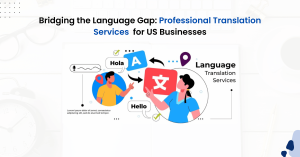The excitement continues to build ahead of TRANSLIT’s much-anticipated launch today (4 pm). The Irish Language Solutions Provider will become the latest supplier of RSI technology. And here we take a closer look at what RSI means, a brief history, and what the future holds for interpreting worldwide.
Firstly, Remote Simultaneous Interpretation is the process of delivering a spoken word in one language to another without using professional infrared or radio equipment. This technology is capable of serving the proper simultaneous interpretation experience to both offline and online types of activities and events.
Traditional onsite simultaneous interpretation, as we know it, was invented in the 1940s but it wasn’t exactly revolutionary at the time. People had radio and they knew how to transmit and receive a signal. That is how the first tour guides appeared. The guide had a microphone and everyone else used earphones as the receivers. That is the cheaper way to do simultaneous interpretation.
But since then, the equipment and the way things are done, hasn’t changed much. It still requires interpreters to be present and the listeners have to use portable infrared or radio receivers and headphones. Realistically, it’s not fit for purpose in the 21st century.
The actual interpretation is delivered through the use of cumbersome professional equipment like soundproof booths, infrared transmitters, microphone consoles and wires. And the logistics behind this is a huge drawback.
In big halls the geometry of the space mattered. Simple things like being in the corner of the building or having a column present, would affect the signal and damage the finished product.
People need simultaneous interpretation for international communication. Usually this involved large scale events. The more people that attended meant more receivers and more money at stake. Places like that normally had it pre-installed. So big events would normally be covered in terms of interpretation. But when we look at the opposite end, smaller venues still need to deliver. Equipment would need to travel by bus, trains or even planes and that is expensive.
For the bigger fairs, like international economic forums, they have a lot of activity. It could be five days long, with thousands and thousands of people. There is a lot of interpreting needed and you need to bring the interpreters to the place. They have to book the hotels for interpreters and then combine that with travelling costs. It’s another very expensive side to simultaneous interpreting.
Before the first RSI providers appeared, the simultaneous interpretation equipment market was dominated by two major German players – Bosch and Sennheiser. There are also a couple of smaller brands but the aforementioned duo were the most well recognised.
In addition to professional infrared equipment, there is also radio equipment like tour guides. These types of tools are usually used for excursions and city tours. It is a type of simultaneous interpretation but it only works for smaller groups and at close distances.
It was around ten years ago, when the first breakthrough came in remote simultaneous interpretation. Data transfer protocols that allowed massive audio and video data delivery finally became available across the globe, crucially with less than one-second of a delay. And that changed everything.
Before that it was not possible to provide proper simultaneous interpretation over the internet. Infrared equipment means soundproof booths, transmitters, and distributing and collecting receivers. It is technically complex.
And the first RSI market players did a very important job in terms of acting as an icebreaker while protecting and promoting the technology to early adopters. The interpretation market was very conservative and as expected the initial feedback was negative because experience heavily depended on the local stage’s WiFi bandwidth.
Interpreters were the most reluctant to change because now their job was not only to deliver interpretation but they were also expected to operate the laptop, keep an eye on the internet connection and be ready to handover in case anything went wrong during the process.
By 2020 RSI was already a major recognized and favoured trend. It proved itself as a stable, high-quality and beneficial technology. And external factors, such as the Covid-19 pandemic, also meant that people were left with no other choice but to go online.
However, a lot of them were not ready. With the simultaneous interpretation market being strongly dependent on the MICE (meetings, incentives, conferences and exhibitions) industry it dropped dramatically.
For a short time, RSI became the only possible option to get a proper service. And then Zoom released an update with simultaneous interpretation and subsequently took almost a third of the market.
The initial forecasts proved to be way too conservative. RSI is taking the market share much faster than previously expected. And the future is all about 5G. That means not only higher download and upload speeds, but more importantly, smaller latency.
Therefore, you can imagine a surgeon wearing a Virtual Reality helmet and remotely operating on a human heart from their country house in the woods, thousands of miles away. That’s how well 5G could be utilised.
At the moment, there are less than 20 companies providing RSI services in the world – we at TRANSLIT are proud to become the latest to join. Currently there are a handful of market leaders with Interprefy, KUDO, Interactio, Voiceboxer and SPEAKUS all prominent.
But we are aiming to join the top dogs and today’s event will be an ideal opportunity to look into what TRANSLIT’s package has in store for the RSI field.
As a Language Service Provider we have 11 years of experience of dealing with various RSI service providers. And through trial and error, it has led us to develop our own solution.
We are going to deliver the service that we always wanted to receive from others. We are fully cognizant of what freelance interpreters and consultant interpreters go through on a weekly basis and now we have the solution for them.
It’s still not too late to book your place at the launch but register now and avail of our unique event, where our CEO Alex Chernenko will take you through TRANSLIT’s latest piece of innovative brilliance.
//By DARAGH SMALL// PR Manager/ TRANSLIT








